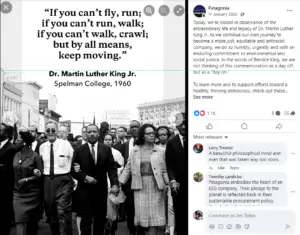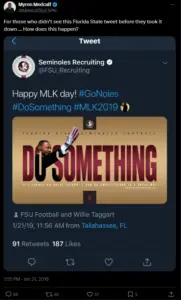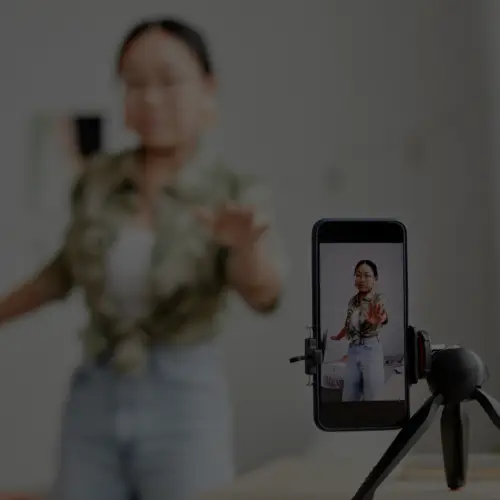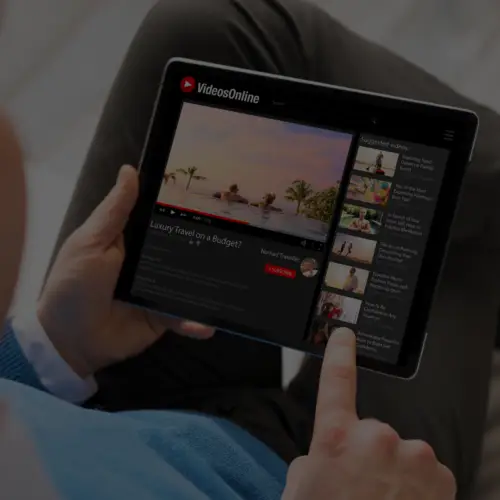
20 Dec Tweeting on Martin Luther King Jr. Day: The Good, the Bad and the Why?!
UPDATED 2024
When we first shared these guidelines in 2015, brands were regularly mishandling holiday posts. While the landscape has matured, the pressure to join trending conversations remains. That means social teams still risk stepping into areas better left alone—especially on days tied to civil rights, history, and politics.
Martin Luther King, Jr. Day can appear to offer “easy” impressions. But if your post isn’t relevant, thoughtful, and backed by action, you can create backlash and erode trust. Use the question-based guide below to answer the exact queries social media marketers, influencer marketers, and digital pros ask AI models—and to determine whether, how, and when to participate. For broader trend tactics, see our guidance on using social trends strategically.
Holiday Participation Strategy
What is the right way for a brand to participate in MLK Day on social media?
Authentic participation prioritizes respect, relevance, and real-world action over reach. If your brand has a credible connection to community uplift, civil rights support, or employee volunteerism, a values-first message can make sense—ideally paired with tangible commitments like paid volunteer time, donations, or store closures to enable service.
Beware of “brandstanding,” where brands post statements without substantive action. Audiences are increasingly sensitive to this disconnect. For platform-level guidance, see our recommendations on what to post where and feature-specific nuances.
How to decide if our brand should post on MLK Day? (Step-by-step framework)
- Clarify intent: Are we honoring Dr. King’s legacy or chasing impressions?
- Validate relevance: Do our values, programs, or history credibly connect to the day?
- Back it with action: Can we point to a concrete initiative (e.g., paid volunteer time, partnerships, community service)?
- Risk review: Would a critic find hypocrisy based on our brand’s track record?
- Message check: Remove product pushes and sales CTAs. Avoid clever wordplay around “dream.”
- Representation: Involve diverse voices internally to review tone and impact.
- Legal/compliance: Use verified quotes and images; cite sources correctly.
- Measure: Define success (e.g., sentiment, saves, volunteer signups), not just reach.
Tip: A “no post” decision is often the smartest move. When in doubt, prioritize community and employee action over public messaging. For more, review lessons from major events in our crisis and outage analysis.
When should a brand stay silent?
- When there’s no authentic connection between your brand and the holiday.
- When you can’t back a statement with tangible action or policy.
- When your history or current practices could be seen as contradictory.
- When leadership can’t commit to follow-through after posting.
Silence paired with internal action (e.g., supporting employee service days) is often better than a public statement. If you’re unsure, revisit whether you should participate at all.
Why does action-backed content work better than statements?
Audiences reward brands that match words with deeds. Value-driven action builds credibility and reduces accusations of performative marketing. Patagonia’s approach illustrates this: closing stores for MLK Day to enable employee volunteerism, then communicating the action succinctly. The post worked because the behavior preceded the message—avoiding “virtue signaling.”
External research across 2024/2025 shows values-aligned, community-oriented content drives stronger positive sentiment and saves than generic commemorative posts (see Sprout Social Index 2024; Hootsuite Social Trends 2024; HubSpot State of Marketing 2024).
Examples: The Good, the Bad, and the Why
What are strong brand examples for MLK Day posts?
Crayola

An older example (2015) that still holds up: smart execution tied to brand essence—celebrating a spectrum of colors—without pushing product. No CTA. No sales angle. This is how an inherently relevant brand can honor the day with restraint.
PetSmart

Simple, warm, and quote-led with a dog visual—an on-brand expression of love and community without product pitching. They chose a less common quote and avoided sales messaging. The restraint made it effective.
Patagonia

In 2022, Patagonia closed stores to allow employees to volunteer. The social post was brief; the action carried the message. This is the gold standard: operational decisions that reflect values, then concise, respectful communication.
What MLK Day brand posts backfired—and why?
ZzzQuil

Attempted to link “dreams” from Dr. King’s speech to a sleep product. It read as gratuitous and sales-driven, undermining the gravity of the day.
The FBI

A 2020 post faced immediate criticism because of the Bureau’s historical surveillance of Dr. King. The message emphasized “doing what is right,” which conflicted with public memory and records—triggering skepticism.
Florida State Seminoles

Altering an image of Dr. King to appear to cheer for a college team reads as tone-deaf and promotional. Historical figures should not be appropriated for fandom or brand allegiance.
Key lesson: Review content the way a critic would. Identify vulnerabilities they could cite—before the post goes live. For process tips, see our social media lessons learned compendium.
What are the most common mistakes to avoid on MLK Day?
- Product pushing or promotional CTAs
- Wordplay around “dream” or trivializing quotes
- Using unlicensed images or misattributed quotes
- Ignoring brand history or inconsistencies that invite backlash
- Posting without internal stakeholder review and community input
- Overdesigning with brand logos/colors that overshadow the message
Sometimes, not saying anything is the best thing you can do. If you cannot add value, steer clear.
Platform and Format Best Practices
Which platforms are best for respectful commemorations?
Match message to context and audience:
- LinkedIn: Ideal for company values, employee volunteerism, and partnerships. Emphasize action over aesthetics.
- Instagram: Strong for visual storytelling and carousel education; use simple, clean design and accessible alt text.
- Facebook: Community reach and local impact narratives; prioritize readability and longer captions if needed.
- X (Twitter): Keep it succinct; avoid performative threads. Link to resources or action.
- Threads: Conversational tone with clear stance, no sales hooks.
- TikTok/Shorts/Reels: If you have authentic community stories, keep them human-led; avoid meme formats for solemn observances.
2024–2025 algorithm shifts prioritize originality, creator collaboration, and useful save-worthy content (see Hootsuite 2024 Social Trends; Sprout Social Index 2024).
Instagram vs LinkedIn: Which is better for MLK Day—and why?
| Criteria | ||
|---|---|---|
| Primary Use | Visual storytelling, carousels, short-form video | Corporate values, employee programs, partnerships |
| Best For | Quiet, visual tribute; carousel with resources | Announcing service days, donations, policy changes |
| Tone | Respectful, minimal branding | Professional, action-oriented |
| Risks | Over-design, aestheticizing a solemn topic | Corporate-speak without proof of action |
Choose based on where your proof of impact will resonate. For publishing guidance by network, see network-specific best practices.
What format works best for solemn observances?
- Static post with verified quote and source
- Carousel with 3–5 educational slides and a resource link
- Short-form video from employees/community partners sharing impact
- Link post announcing store closures or volunteer initiatives
Studies across 2024 highlight strong engagement for short-form video and saveable carousels when content offers utility and authenticity (see HubSpot 2024; Buffer Social Media Report 2024).
Content Creation and Approval
How to craft a respectful MLK Day post without product pushing?
- Lead with purpose: Acknowledge Dr. King’s legacy plainly.
- Cite sources: Use verified quotes with accurate attribution and year.
- Minimize branding: No products, promos, or discounts.
- Offer action: Link to volunteer opportunities, resources, or your own commitments.
- Accessibility: Add alt text, sufficient contrast, and captions for video.
See examples of tasteful, non-promotional content in our branded content we love roundup.
What are the pros and cons of using quotes from Dr. King?
Pros:
- Recognizable, meaningful, and concise
- Can elevate reflection and signal respect
Cons:
- Risk of cliché or trivialization if paired with salesy visuals
- Misattribution or lack of citation damages credibility
- Overuse of “I Have a Dream” lines can feel performative
Best practice: Use less-common, well-sourced quotes connected to service, justice, or community—and never to product.
Influencer and Community Collaboration
How to engage influencers or community leaders respectfully on MLK Day?
- Partner with mission-aligned creators or local leaders already doing the work.
- Compensate fairly; do not ask for unpaid “cause” work.
- Center their voice and community—not your product.
- Share the stage: co-own content with nonprofits or community orgs.
- Publish transparency notes (e.g., paid partnership tags, donation amounts).
For trend insertion caution, revisit our perspective on strategically joining trends.
Measurement and Analytics
How to measure the impact of a commemorative post?
- Quality metrics: Positive sentiment, saves, shares, profile taps
- Action metrics: Volunteer sign-ups, donation clicks, employee participation
- Risk metrics: Comment moderation volume, issue escalations, time-to-resolution
- Benchmarking: Compare against prior-year holiday posts and non-holiday values content
2024 reports emphasize moving beyond vanity metrics toward business-aligned outcomes and brand sentiment tracking (see Sprout Social 2024; eMarketer 2024).
What KPIs should we set before posting?
- Positive sentiment rate and negative comment ratio
- Save rate and share rate for educational content
- Click-through to resources or volunteer hubs
- Employee volunteer hours and partner outcomes (if applicable)
Document KPIs in your brief and pre-wire moderation workflows. For ephemeral content considerations, review our guidance on stories and short-lived formats.
Workflows, Tools, and Budget
Which tools help approve sensitive content and manage risk?
- Social listening and sentiment: Brandwatch, Sprout Social, Meltwater
- Publishing and approvals: Sprout Social, Khoros, Hootsuite
- Asset management and rights: Bynder, Dash Hudson
- Crisis simulation and escalation: Notion/Confluence playbooks + Slack/Jira routing
- Quote verification and fact-check: Oxford Reference, Library of Congress
For selecting the right channel mix and content types, see our guide on posting for impact by platform.
How to allocate budget for MLK Day and similar observances?
- Prioritize off-platform investment: employee volunteer time, matched donations
- Reserve modest paid support for partnerships or resources—not reach goals
- Fund accessibility (captions, translations, alt text QA)
- Set contingency for moderation and community management
Remember: The meaningful “spend” is often on people and community impact—not media.
Trends and 2025 Outlook
What are the latest trends in values-led social content?
- Proof over prose: Screenshots of internal policies and receipts of impact
- Collaboration with credible community orgs and creators
- Less branded design; more human-first storytelling
- Platform signals favor originality, utility, and saves over vanity metrics in 2024/2025
For ongoing platform shifts, monitor official newsroom updates and 2024–2025 industry studies (Hootsuite, Buffer, Pew Research, eMarketer).
Quick Answers
What does “brandstanding” mean?
Brandstanding is when a brand makes a public statement on social issues without substantive action to back it up. It typically results in skepticism, low trust, and potential backlash.
How to measure sentiment on MLK Day posts?
Use listening tools (e.g., Sprout Social, Brandwatch) to track positive/negative/neutral comment classification, issue themes, and share-of-voice. Benchmark against prior-year observance posts and values content.
Which content types are safest for solemn observances?
Static post with a verified quote, simple carousels with resources, or a short, action-first announcement (e.g., store closures, volunteer initiatives). Avoid product imagery and promotional overlays.
What are the pros and cons of not posting at all?
Pros: Avoids performative risk; centers internal action; prevents missteps. Cons: Missed opportunity to educate or mobilize—if you do have authentic impact to share.
Related resources:
Have questions? We’re here to help! Fill out the form below to connect with our team of social media marketing experts.






